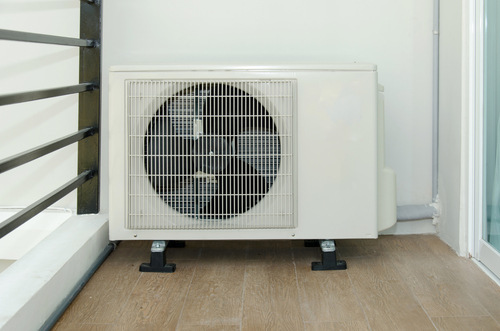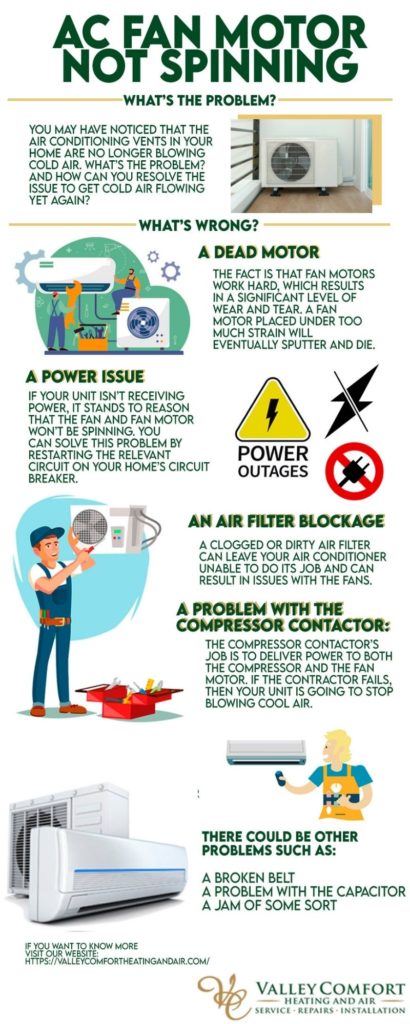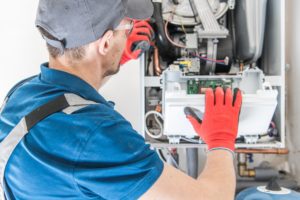Everything You Need to Know About AC Fan Motors
AC units have a few moving parts that can cause problems, but when your air conditioning isn’t working the way it’s supposed to, there’s a pretty good chance the fault lies with either the cooling medium or, most likely, the fan motor. It’s frustrating when an expensive AC system suddenly stops working and you might be tempted to just run out and buy a new one, but there are actually plenty of things you can do to make sure everything runs smoothly and fix the problem when it doesn’t.
Quick Links
- What an AC Fan Motor Does and How to Tell if It’s Not Working
- Most Common Causes for AC Fan Motor Failure
- Dead Motor
- Power Issues
- Air Filter Blockages
- AC Contactor Issues
- A Broken or Worn Belt
- Capacitor Issues
- A Jam in the Fan or Motor
- Diagnosing the Problem
- What to Do Next
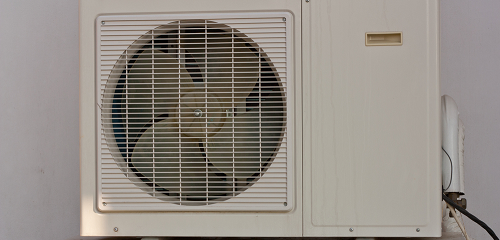 There are two main steps to repairing any system, air conditioning included. The first step is diagnosis, or figuring out exactly what’s going wrong. This is obviously a vital part of the process, since it’s impossible to make any repairs unless you first know what you need to be fixing. Diagnosis requires a little basic knowledge of how these machines work, which can be a little daunting for the average person. Luckily, we’re here to give you a quick rundown on how AC fan motors work, and some of the main reasons things might go wrong.
There are two main steps to repairing any system, air conditioning included. The first step is diagnosis, or figuring out exactly what’s going wrong. This is obviously a vital part of the process, since it’s impossible to make any repairs unless you first know what you need to be fixing. Diagnosis requires a little basic knowledge of how these machines work, which can be a little daunting for the average person. Luckily, we’re here to give you a quick rundown on how AC fan motors work, and some of the main reasons things might go wrong.
Once you’ve figured out the problem, the next step is opening up the unit and fixing it. Believe it or not, this is actually the easy part. If you know what you need to fix, it’s pretty straightforward to find a guide online to help you with the repairs. If that doesn’t work, you can always bring in professional help like Valley Comfort Heating & Air. This is the fastest and easiest way to make any repairs, and leaves you with the peace of mind from knowing for sure that everything is running correctly.
What an AC Fan Motor Does and How to Tell if It’s Not Working?
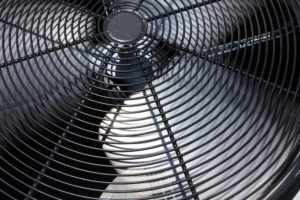 HVAC systems might seem complicated, but they essentially break down into three parts: the thermostat, the vents, and the cooling unit itself. The thermostat is the control system, and also features thermometers that constantly measure the temperature of the air in your house. When the temperature goes above a threshold set by you, the thermostat sends a signal to turn on the AC unit.
HVAC systems might seem complicated, but they essentially break down into three parts: the thermostat, the vents, and the cooling unit itself. The thermostat is the control system, and also features thermometers that constantly measure the temperature of the air in your house. When the temperature goes above a threshold set by you, the thermostat sends a signal to turn on the AC unit.
An AC unit is made up of two main elements: the fan and the cooling medium – usually condenser coils filled with a refrigerant chemical. There are other important parts, like the evaporator coil that absorbs warm air, but for now let’s just focus on the fan and the condenser coils. Once the AC unit receives a signal from the thermostat, it turns on, and the fan starts to spin. The spinning fan pulls air from outside your house and blows it across the condenser coils, which cool the air. The newly chilled air is then blown into your house, either directly out the front of the unit or through vents in your walls or ceiling.
The AC fan actually provides two important functions to the unit. Not only does it propel the air across the coils and into the vents, but it also prevents the condenser coils from overheating, which can cause more significant problems. As you can imagine, once the fan stops working, you’ll notice a difference pretty much right away. You should be hearing the fan spinning every time the system turns on, so if you haven’t heard it in a while, or your house seems warmer than usual, you should check to see if the fan motor is working properly.
The easiest way to check on the AC fan motor is to switch your thermostat from “Auto” or “Cool” to “Fan” mode. When “Fan” mode is turned on, the AC fan should be running continuously, even when the condenser coils are off. This is intended to create airflow in your house even when the temperature is already at the correct level. If you switch your thermostat to “Fan” and you don’t hear anything, then you may have a problem with the fan motor.
Most Common Causes for AC Fan Motor Failure
If your AC fan motor isn’t running, even in “Fan” mode, there’s most likely something wrong inside the unit. This page includes a few of the most common problems that can occur inside your AC fan motor. It’s worth noting, however, that the best way to fix any of these problems is to make sure they don’t happen at all. Just like any other machine, AC units require consistent preventative maintenance to keep everything running smoothly, so make sure you’re keeping the system clean and oiling it regularly. Just think of it in the same terms as your car. If you always wait until something is wrong before you take your car to the mechanic, you’re going to cause more damage and wear and tear to your engine parts. This is more expensive in the long run, and the same goes for air conditioning. Here are a few of the common issues you should be trying to avoid.
Dead Motor
This is the simplest and most common cause of AC fan motor failure. These motors work extremely hard, especially during the summer months, and that causes regular wear and tear just like any other machine. If you have an older unit that’s been running for several years before it finally stops, the most likely scenario is that the motor has died. This is especially common if you keep the thermostat set to “Fan” frequently. Keeping the fan running all day creates a pleasant airflow in your home, but it also creates more strain on the motor, so keep that in mind when you’re deciding which setting to use.
Unfortunately, if the AC fan motor dies, there’s really not all that much you can do to fix it. Replacing the motor can cost between $300 to $500, which is a lot, but that’s still less than replacing the whole unit. The best way to avoid having to replace your motor is with consistent and in-depth maintenance, so make sure you’re staying on top of that – your wallet will thank you.
Power Issues
Another simple answer is that your system might just not be receiving power. If no electricity is getting to the motor, obviously nothing is going to happen when you switch it on. This is another problem that can be difficult for the average homeowner to fix, but before you call for professional help, there’s one thing you should try. We find that when power isn’t flowing to an AC unit, it’s often just because the circuit is flipped off in the circuit breaker. This can happen automatically when there’s something wrong with the unit, particularly if it starts overheating, but it can sometimes just be forgetfulness. Some people flip the circuit for the HVAC system off during the winter months to prevent electricity from being wasted and simply forget to turn it back on. If flipping the circuit causes the fan motor to turn back on, then the problem might be fixed. However, you should keep an eye on the system. If the unit is repeatedly tripping the circuit breaker, then there’s a deeper electrical issue that you need to deal with. When it comes to power and electrical problems, we generally recommend calling for professional help. Messing around with electrical systems can be dangerous, especially if you’re not an expert.
Air Filter Blockages
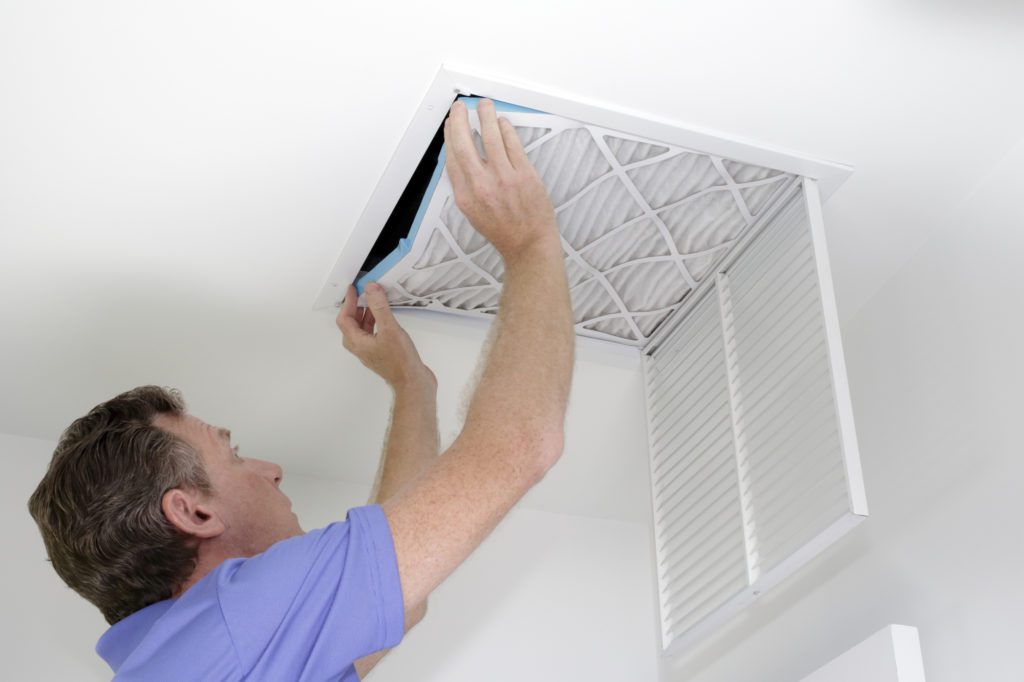
A clogged or dirty air filter can cause problems with every part of the AC unit, including the fan motor. Dust or debris can block air flow to and from the unit, preventing the HVAC system from working properly. In fact, a dirty air filter can cause some of the other issues we’ve already mentioned as well. When blockages in the air filter reduce the airflow through the unit, it forces the AC fan motor to work harder every time it needs to cool down the air in your home. This can cause greater strain on the motor itself, making it more likely to fail. It can also cause voltage surges that will trip the circuit breaker, frequently shutting down the whole system. On the flip side, reduced airflow during the winter months can cause ice to build up in the unit, damaging the motor.
Keeping the air filter clean is one of the most important things you can do to maintain your AC unit. As a general rule, you should replace the air filter about once a month, though that can vary depending on which kind of filter you have. High end pleated filters can last for up to six months, but you should still keep an eye on it just in case.
AC Contactor Issues
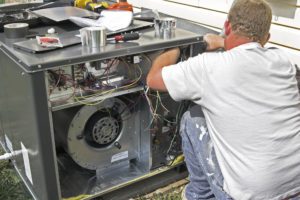 The compressor contactor is another important part of any AC unit, and can cause problems if it fails. Essentially, the contactor is the device that controls whether or not electricity is entering the unit. Think of it as a gate. When the “gate” is up, electricity can’t get to the unit, and it stays off. But when the thermostat detects a need for cold air, it sends a signal to the contactor and the “gate” lowers, allowing the fan and the compressor coils to turn on. A bad contactor can fail or overheat, which creates problems for the unit. One tell-tale sign of a contactor failure is if you can hear the compressor coils running constantly, even when the fan isn’t blowing. This likely means the contactor has melted and can’t raise the “gate,” allowing power to run to the coils constantly. If you notice this problem, turn the whole unit off.
The compressor contactor is another important part of any AC unit, and can cause problems if it fails. Essentially, the contactor is the device that controls whether or not electricity is entering the unit. Think of it as a gate. When the “gate” is up, electricity can’t get to the unit, and it stays off. But when the thermostat detects a need for cold air, it sends a signal to the contactor and the “gate” lowers, allowing the fan and the compressor coils to turn on. A bad contactor can fail or overheat, which creates problems for the unit. One tell-tale sign of a contactor failure is if you can hear the compressor coils running constantly, even when the fan isn’t blowing. This likely means the contactor has melted and can’t raise the “gate,” allowing power to run to the coils constantly. If you notice this problem, turn the whole unit off.
If you’re electrically savvy, you can test whether or not the contactor is working with a multimeter on the “OL” setting. When you connect to the contactor, the multimeter should read between 5 and 20. If the readout says anything else, you should replace the contactor. Please note that if you’re not comfortable with wiring, don’t try to replace the piece yourself. A bad contactor can be easily fixed by HVAC repair professionals like the ones at Valley Comfort Heating & Air, with no risk of anyone being hurt or causing a short to the unit’s electrical systems. Remember, it’s better to bring in help when you need it than to accidentally break something trying to fix it yourself.
A Broken or Worn Belt
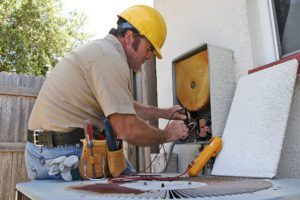 Like many engines, some AC fan motors use a belt to connect certain parts together and help them run smoothly. Generally, HVAC systems use a simple V-belt that connects two cogs. If you know anything about cars, you’ll likely recognize the belt – it’s similar to the kind used to connect automotive AC systems to the car’s engine. Much like car engine belts, HVAC fan belts will wear out from use, and require maintenance. As your AC motor runs, the belt will gradually stretch to be longer. This causes a problem because belts require a very specific amount of tension to run properly. Too much tension can damage the parts of the motor, and not enough tension can cause the belt to slip. As the belt stretches and slips, one side can become more smooth, which causes more slippage. If the belt slips off completely, the motor will stop running. The best way to avoid this problem is to check your belt regularly to make sure it’s not wearing out or stretching, and replace it when you notice any problems.
Like many engines, some AC fan motors use a belt to connect certain parts together and help them run smoothly. Generally, HVAC systems use a simple V-belt that connects two cogs. If you know anything about cars, you’ll likely recognize the belt – it’s similar to the kind used to connect automotive AC systems to the car’s engine. Much like car engine belts, HVAC fan belts will wear out from use, and require maintenance. As your AC motor runs, the belt will gradually stretch to be longer. This causes a problem because belts require a very specific amount of tension to run properly. Too much tension can damage the parts of the motor, and not enough tension can cause the belt to slip. As the belt stretches and slips, one side can become more smooth, which causes more slippage. If the belt slips off completely, the motor will stop running. The best way to avoid this problem is to check your belt regularly to make sure it’s not wearing out or stretching, and replace it when you notice any problems.
It’s worth noting that most modern AC systems have moved on from belt-powered fans, so you’ll only run into this problem if you have an older unit. If you’re having problems with the belt, we recommend just upgrading to a more current system that won’t have the same issues.
Capacitor Issues
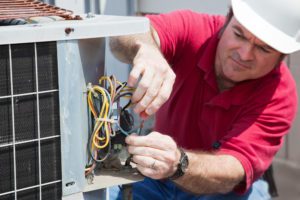 Like the contactor, the capacitor is an important part of your AC unit’s electrical system. This piece stores electricity that it uses to start the fan motor when the unit switches on. When the unit turns on, the capacitor hits the motor with a quick burst of voltage to help it get started. Once the fan has started spinning, it can continue without any extra bursts of electricity, but it needs the capacitor to get it started. It’s essentially the same function that the battery in your car provides.
Like the contactor, the capacitor is an important part of your AC unit’s electrical system. This piece stores electricity that it uses to start the fan motor when the unit switches on. When the unit turns on, the capacitor hits the motor with a quick burst of voltage to help it get started. Once the fan has started spinning, it can continue without any extra bursts of electricity, but it needs the capacitor to get it started. It’s essentially the same function that the battery in your car provides.
Any driver knows that car batteries gradually lose charge and efficacy over time, and the same is true for the capacitor in your AC unit. The same way a dead battery will prevent your car’s engine from starting, a capacitor failure will keep your AC fan motor from turning on. Like any battery, once the capacitor stops holding a charge, it can’t really be repaired. The only way to fix this problem is by replacing the capacitor or hiring an HVAC repair specialist to replace it for you.
If your AC fan motor isn’t starting and you suspect it may be the capacitor, there’s an easy way to test this. Essentially, you have to “jump start” your fan motor, just like you do when your car has a dead battery. To do this, just find a small stick or dowel and stick it through the grate on top of your AC unit. Find the fan blades and give them a little nudge with the stick to get them spinning. If they can keep going once you’ve started them, then you know the problem is with the capacitor.
When starting the fan blades, make sure you’re using a stick and not your fingers. Once the fan gets started, it can speed up very quickly, so sticking your fingers inside is a bad idea. You should also make sure you’re using something made of wood instead of metal, otherwise you could end up with a pretty serious electric shock.
A Jam in the Fan or Motor
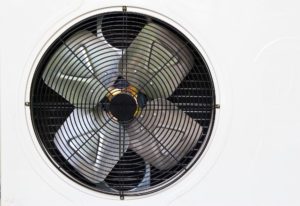 Another common cause of failure in AC fan motors is just a plain old jam or blockage. This is a potential issue for any mechanical device and AC units are no exception. In fact, AC units are especially prone to this kind of issue, because they’re constantly drawing air in from the outside. Dust and other little bits of debris can pile up inside the motor, stopping it from functioning properly, or larger objects like leaves can wrap around the axle of the fan.
Another common cause of failure in AC fan motors is just a plain old jam or blockage. This is a potential issue for any mechanical device and AC units are no exception. In fact, AC units are especially prone to this kind of issue, because they’re constantly drawing air in from the outside. Dust and other little bits of debris can pile up inside the motor, stopping it from functioning properly, or larger objects like leaves can wrap around the axle of the fan.
The best way to check if your unit has a jam is to just see for yourself. If you’ve tried to “jump start” the fan with a stick and found that the blades are difficult to move, then you likely have a jam of some kind. Often all you have to do is open up the unit and take a look inside, and you’ll see where the problem is. Fixing this issue is pretty straightforward – just clear out any of the debris inside the unit. Make sure it’s turned off before you do anything though, you don’t want the blades coming free and hitting your fingers.
If the axle seems fine, there might still be sludge buildup inside the bearings of the fan motor. You might be able to clean the bearings by yourself, but this might require a replacement motor if the condition is bad enough.
Jams and blockages can be almost entirely avoided through preventative maintenance. Cleaning out dust and debris from the inside of the unit is the first thing you should do every time you take a look inside. As long as you keep up with a regular maintenance schedule, you shouldn’t have any problems with the motor becoming jammed or blocked.
Diagnosing the Problem
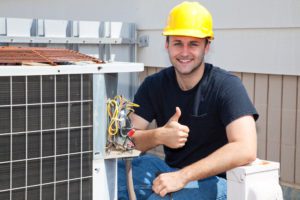
Now that you know the seven most common causes of AC fan motor failure, you’re much more well-equipped to figure out what’s going on when there’s a problem. Experience still goes a long way here, so don’t be discouraged if you can’t figure out what’s wrong. You can always bring in a professional if you’re stumped.
The first step to diagnosing what’s wrong with your AC unit is to figure out if the failure is with both the fan and the compressor coils, or if it’s just the fan motor that’s not running. This is relatively easy to do by ear. AC compressors make noise, just not as much as the fan usually does. If your unit is failing but still makes noise, then the compressor coils are likely still running. If the unit is dead silent, then it’s probably just the fan motor that’s failed.
If the compressor coils are still making noise, then you know the problem lies in either the capacitor or the motor itself. Something is either preventing power from reaching the motor, or blocking the fan blades from spinning. This could be a jam, a problem with the belt, an air filter issue, or the motor itself could just be dead.
If both the fan motor and the compressor coils are silent, then the whole unit isn’t getting power. First check the circuit breaker, then you can see if the contactor is working properly. There’s a pretty good chance that the problem is something in this article.
What to Do Next?
If you can’t identify the problem with the unit, then either you missed something or, more likely, it’s a relatively uncommon issue. Either way, your next step should be to call in a professional to take a look at your unit. Someone trained in HVAC repair will be able to diagnose the problem and fix it for you, as long as it’s fixable.
If you were able to figure out the problem, then you have two options. You can try to fix it yourself, or you can bring someone in anyway. If you’re able to identify the issue when the repair specialist arrived, then you’ve still made their job significantly easier and most likely saved yourself a little money.
If you’re in Sonoma or Marin County and you have a problem with your AC unit, feel free to give Valley Comfort Heating & Air a call at (707) 539-4533. We’re confident you’ll love our attention to detail and superior customer service, and we’re ready to help you get your system back in working condition.

